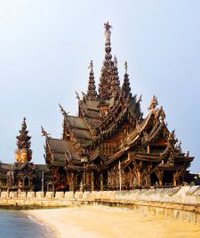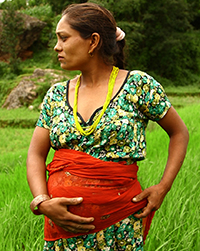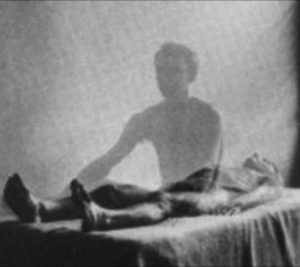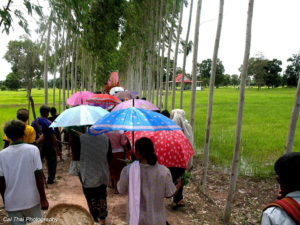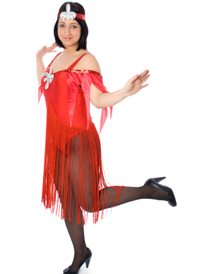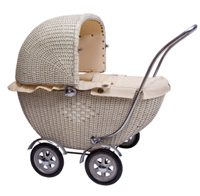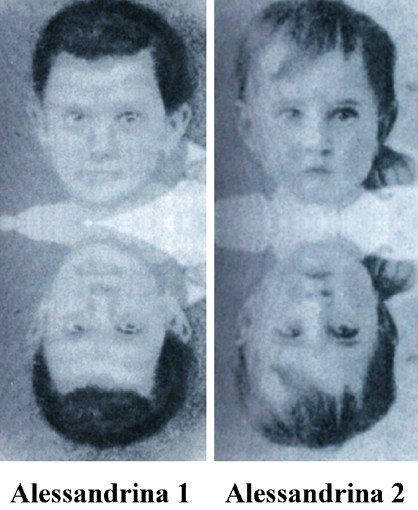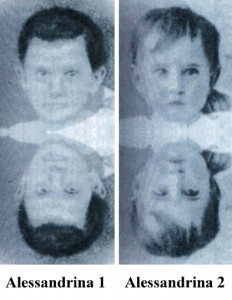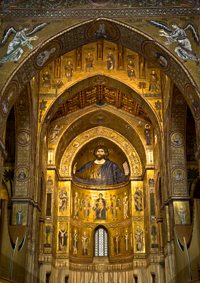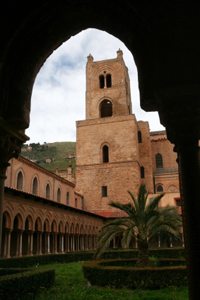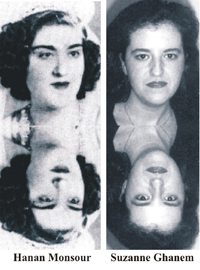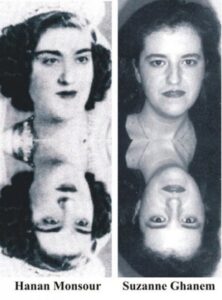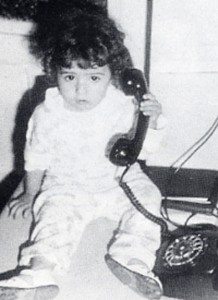How Derived: Memories in Childhood
Researched by: Ian Stevenson, MD
From: Cases of the Reincarnation Type, Volume III, Twelve Cases in Lebanon and Turkey, by Ian Stevenson
Article by Walter Semkiw, MD
Ahmet Delibalta’s Nightclub, Bakery & Muslim Wife
 Ahmet Delibalta was born in Adana, Turkey, in 1936. He married a woman named Mihriban and had three children with her. Ahmet also took a second wife, Fehime, a Turk who was an orthodox Muslim.
Ahmet Delibalta was born in Adana, Turkey, in 1936. He married a woman named Mihriban and had three children with her. Ahmet also took a second wife, Fehime, a Turk who was an orthodox Muslim.
Ahmet owned a nightclub in Adana called “Havuz” and running this club was his passion. Havuz provided Ahmet with a very good income and he was able to afford a large and well-appointed house. Ahmet also owned a bakery in Adana.
Ahmet Freezes to Death after a Plane Crash
In 1962 he went to Istanbul to find a female singer for his nightclub. His second wife, Fehime, was pregnant when he left for this two week business trip. In Istanbul, Ahmet chose a woman named Rengin Arda as his singer. On March 8, 1962, he was bringing Rengin back to Adana by airplane.  Unfortunately, the Turkish Airlines airplane they were on crashed in the snow-covered Toros Mountains. It was thought the passengers died on impact.
Unfortunately, the Turkish Airlines airplane they were on crashed in the snow-covered Toros Mountains. It was thought the passengers died on impact.
The investigation that followed, though, revealed that the plane had landed in soft snow, but in a very remote area, which meant that rescuers could not reach the downed plane for several days. Passengers who survived the crash, including Ahmet, froze to death. Ahmet was about 35 years old when he died.
In Error, A Jewish Man’s Body is Received by Ahmet’s Family
In recovering bodies from the crash, a mistake was made in identifying Ahmet’s body. Initially, the body of another passenger, who was Jewish, was identified as Ahmet. This occurred when Ahmet’s younger brother declined to view the body itself, as it was too emotionally distressing for him. Instead, he asked to be shown clothing from the body. Mistakenly, he identified the clothing from the Jewish man as the clothing that belonged to Ahmet. The body of the Jewish man was then buried in a cemetery under the name of Ahmet Delibalta.
The error was subsequently discovered when the rest of the bodies were brought down from the mountain. One of the bodies had the Ahmet’s identify card on it. The body of the Jewish man who was mistakenly buried as Ahmet had to be exhumed and buried elsewhere.
Soul Plan: An Announcing Dream
Latife Kilic lived in Adana, Turkey, with her husband Yusuf. A week before Ahmet Delibalta’s plane crashed, she had a dream. In this dream, Ahmet Delibalta appeared, who Latife only knew by sight, not by acquaintance. In the dream, Ahmet gave her a gift and then laid down on the bed between Latife and Yusef. When she woke, Latife asked her husband:
“What does that nightclub man want at our place?” (1)
Latife was pregnant and near term. Yusuf interpreted the dream to mean that they would have a boy. Approximately two weeks later, Latife did have a boy, which we will see appears to have indeed been the reincarnation of Ahmet Delibalta.
Past Life Phobia: Erkan Kilic is Born with an Intense Fear of Airplanes
 Erkan Kilic was born in Adana, Turky, around the day of March 13, 1962, just a few days after the airplane crash that killed Ahmet Delibalta. As noted, his parents were Yusuf Kilic and his wife, Latife, who were Arabs. Erkan was one of 15 children born to Latife and Yusuf. Yusuf worked for his nephew, Zekeriya Kilic, who owned a business selling electrical equipment. Yusef and Latife were relatively poor.
Erkan Kilic was born in Adana, Turky, around the day of March 13, 1962, just a few days after the airplane crash that killed Ahmet Delibalta. As noted, his parents were Yusuf Kilic and his wife, Latife, who were Arabs. Erkan was one of 15 children born to Latife and Yusuf. Yusuf worked for his nephew, Zekeriya Kilic, who owned a business selling electrical equipment. Yusef and Latife were relatively poor.
Before Erkan could even speak, he demonstrated a great fear of airplanes, which was triggered by seeing an airplane or by hearing their engines. Upon these occasions, Erkan would run to his mother or hide under his bed. This phobia lasted until he was three years of age.
Phobias from past life traumas are common in reincarnation cases. In the case of Rashid Khaddege | Daniel Jurdi, Daniel had a phobia of fast moving cars, which resulted from his death as Rashid Kaddege in an automobile accident. In the case of Anne Frank | Barbro Karlen, Barbro had a fear of men in uniform, stemming from Anne Frank’s persecution by Nazi’s. Both the Kaddege | Jurdi and Frank | Karlen cases show that facial features can remain the same from lifetime to lifetime. The Anne Frank | Barbro Karlen case demonstrates that one can change religion and nationality from one incarnation to another.
Past Life Memories: Erkan Tells Latife that He is Ahmet Delibalta & She is Not his Real Mother
Erkan began to talk when he was between two and three years of age,. As soon as he could speak, he told Latife that she was not his mother. He asked to be taken to his real mother and to his wife. Erkan also said that his real name was Ahmet Delibalta and that he had a nightclub called “Havuz,” as well as a bakery. As noted, Erkan’s parents knew who Ahmet Delibalta was and of his death in a plane crash, but they denied having any personal acquaintance with Ahmet.
The phenomenon of a child telling the biologic mother that she is not the child’s real mother, along with the demand by the child to be taken to their real mother, is common in reincarnation cases studied by Ian Stevenson. As another example, in the case of Anne Frank | Barbro Karlen, little Barbro also told her parents that they were not her real parents and that their home was not her real home. Barbro informed her biologic parents that her real parents would soon come to get her and take her back to her real home.
Past Life Memories: Erkan Describes his Death as Ahmet Delibalta
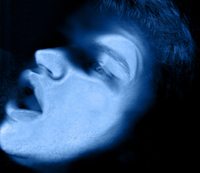 When Erkan was two to three years old, he reported details of his death in a past lifetime. He told his mother, Latife, that he had gone to Istanbul to find a singer for his nightclub. On the way back from Istanbul, their plane crashed in the Toros mountains.
When Erkan was two to three years old, he reported details of his death in a past lifetime. He told his mother, Latife, that he had gone to Istanbul to find a singer for his nightclub. On the way back from Istanbul, their plane crashed in the Toros mountains.
Little Erkan also knew that he, as Ahmet, did not die in the crash of the plane. Rather, Erkan said that he died later by freezing to death. Ian Stevenson was particularly impressed by this statement made by Erkan, as everyone associated with this reincarnation case thought that all the victims had died on impact. Only those very familiar with the investigation of the crash knew that some passengers, including Ahmet Delibalta, did survive the crash and later froze to death.
Spirit Being in Reincarnation Case: Ahmet, from the Spirit World, Observes Recovery of his Body
Erkan also knew that his body was confused with that of a Jewish man who was also on the plane. Ahmet’s brothers reported that the Delibalta family was very embarrassed about this incident and tried to keep it secret. As such, the confusion regarding the bodies was not well-known outside the immediate family. As such, how could Erkan, as a child, know this detail?
Erkan’s knowledge of the confusion about the identity of the bodies also implies that after his death, Ahmet was able to observe the recovery of bodies and the chain of events that led to the wrong body being buried in Ahmet’s grave. As such, this represents an example of spirit being involvement in a reincarnation case.
Past Life Memories: Erkan Identifies Past Life Family Members
When Erkan was two to three years old, he made accurate statements regarding the names of his past life family. He said that in his lifetime as Ahmet, his father was named Yunus, his mother Emine, his sons Veysel and Ali, his daughter Aysel, his sister Turkan and his mother-in-law Katibe. All these statements were correct.
Erkan also reported that his wife’s name was Mihriban and that he had another wife named Fehime. Erkan said the he preferred Mihriban over Fehime, which was verified by Ahmet’s brother-in-law.
Erkan was also able to identify members of Ahmet Delibalta’s family from photographs. He correctly identified Ahmet’s wife, Mihriban, and two of Ahmet’s children, Veysel and Aysel, in these photos. It is not clear whether Erkan had already met Mihriban when he saw these pictures, but Ian Stevenson found the identification of Veysel and Aysel, as small children, as impressive.
Geographic Past Life Memory: Erkan Finds his Way to his to Wife, Mihriban, and his Past Life Home
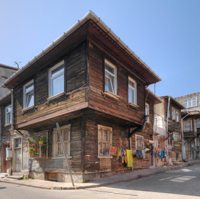 When Erkan was two to three years old, he expressed a desire to visit places from his past lifetime as Ahmet. On his own, he walked to the home of Ahmet Delibalta, which was 200 meters away from the Kilic home. Ahmet’s widow, Mihriban, was still living there. There, Erkan introduced himself to Mihriban.
When Erkan was two to three years old, he expressed a desire to visit places from his past lifetime as Ahmet. On his own, he walked to the home of Ahmet Delibalta, which was 200 meters away from the Kilic home. Ahmet’s widow, Mihriban, was still living there. There, Erkan introduced himself to Mihriban.
Later on, when Latife was with Mihriban and Mihriban’s sister-in-law, Latife asked who his wife in his past lifetime was. Without any hesitation, Erkan correctly pointed to Mihriban.
On another occasion, Erkan had completely disappeared from the Kilic home, which caused a panic. His parents later found him in the Ahmet Delibalta’s home, with Ahmet’s first wife, Mihriban.
After Erkan found the Delibalta home, he went there on his own often and would stay sometimes until 10 or 11 at night. A Kilic family member had to go to retrieve him. Latife, Erkan’s mother, found Erkan’s frequent visits to the Delibalta’s home so annoying that she started to beat him to prevent him from going there.
When Mihriban would take her children to visit her sister, who lived in a house across the street from the Kilic family, Erkan would climb on the roof and watch them. When asked what he was doing, Erkan explained that he was “watching his wife and children.” Ian Stevenson noted that Erkan repeatedly was observed to climb on the roof to watch Mihriban and her children. (2)
Geographic Past Life Memory: Erkan Finds the Apartment of Fehime, his Past Life Second Wife
 One day, Erkan insisted to Latife, his mother, that he wanted to visit Fehime. Latife knew that Fehime lived in the same apartment building as her physician, so she took Erkan there and went to the physician’s door, hoping he could direct them to where Fehime lived. The physician was not home.
One day, Erkan insisted to Latife, his mother, that he wanted to visit Fehime. Latife knew that Fehime lived in the same apartment building as her physician, so she took Erkan there and went to the physician’s door, hoping he could direct them to where Fehime lived. The physician was not home.
Erkan then led Latife to another door in the apartment building and knocked on it. Fehime answered. Latife then introduced herself. Fehime had heard about Erkan’s claims to be the reincarnation of Ahmet.
Fehime then asked Erkan, “Do you recognize me?” (3)
Erkan replied: “You are Fehime.” (4)
Fehime then asked, “What relation am I to you?” (5)
Erkan replied: “You are my wife.” (6)
Fehime then introduced Erkan to a small girl who was in the apartment. She asked Erkan if he knew who she was.
Erkan replied: “How could I recognize her since you were pregnant and suffering labor pains?” (7)
Ahmet, as a Spirit Being, Observes Fehime in Labor
Fehime had delivered her daughter two days after Ahmet’s plane crashed in the Toros Mountains. Ahmet, did not die in the crash, though it is not known how long he lived after the crash. Whether he was dead or alive, it appears that his soul was able to observe Fehime going into labor.
Geographic Past Life Memory: Erkan Finds his Past Life Mother & Bakery
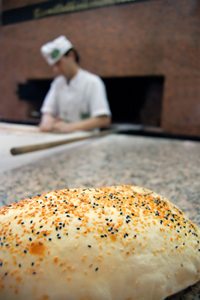 Again, when Erkan was only two to three years old, he asked his mother, Latife, if he could go visit his mother from his prior lifetime as Ahmet. Erkan said:
Again, when Erkan was only two to three years old, he asked his mother, Latife, if he could go visit his mother from his prior lifetime as Ahmet. Erkan said:
“I can show you the way to my mother’s place.” (8)
Latife allowed him to try to find the way and she followed him to see where he would go. Erkan led his mother on a 200 meter walk directly to the home of Ahmet’s mother, which was next door to the bakery that Ahmet had owned.
Once Erkan found the bakery, he would repeatedly visit it and claim that he owned the bakery. One baker came to believe that Erkan was indeed the reincarnation of Ahmet Delibalta and gave him a loaf of bread. The worker invited Erkan to return whenever he wanted more bread.
Geographic Past Life Memory in Reincarnation Cases
Many reincarnation cases feature the phenomenon of a child remembering the way to a past life home. As an example, in the case of Anne Frank | Barbro Karlen, at ten years of age Barbro was able to lead her parents on a 10 minute walk from their hotel in Amsterdam directly to the Anne Frank House, even though Barbro had never been in Amsterdam before.
Other such cases can be found in the section entitled: Geographic Memory
Past Life Memory: Erkan Recognizes the Singer from Istanbul from a Photograph
 Rengin Arda, the singer who died with Ahmet on the way back from Istanbul, had been in Adana once before. A German hairdressing she went to had a photograph taken with Regin on this prior visit. When the hairdresser heard about Erkan’s claim that he was Ahmet reincarnated, the hairdresser came to the Kulic home to do her own test.
Rengin Arda, the singer who died with Ahmet on the way back from Istanbul, had been in Adana once before. A German hairdressing she went to had a photograph taken with Regin on this prior visit. When the hairdresser heard about Erkan’s claim that he was Ahmet reincarnated, the hairdresser came to the Kulic home to do her own test.
The hairdresser had everyone sit down and be silent. She then brought out her photograph and showed it to Erkan. She then asked who the women in photo were.
Erkan replied: “You and the singer.” (9)
The hairdresser then asked Erkan the name of the singer. He replied promptly: “Rengin Arda.” (10)
Ian Stevenson noted that this was a significant identification, as Erkan’s parents themselves did not know the name of the singer.
Past Life Behavior: Erkan plays Nightclub Owner, a Past Life Passion
 As a child, Erkan liked to pretend that he owned a nightclub. Ian Stevenson wrote:
As a child, Erkan liked to pretend that he owned a nightclub. Ian Stevenson wrote:
“Erkan greatly enjoyed playing that he was the proprietor of a nightclub. He arranged boxes to represent a bar and put bottles on them. He assigned roles to the neighborhood girls and gave one a stick to hold to represent a microphone held by the singer. On one occasion, Erkan was observed setting out two chairs for the wives of Ahmet, Mihriban and Fehime.” (11)
“Latife Kilic had the impression from watching Erkan playing the game of ‘nightclub’ that he preferred Mihriban to Fehime. Erkan himself said quite frankly in 1970 that he (in his previous life) preferred Mihriban to Fehime.” (12)
As noted previously, Latife’s observation and Erkan’s statement that Ahmet preferred Mihriban was confirmed by Ahmet’s brother in law, Ihsan Ozbicer.
Erkan’s early fascination with playing nightclub can be seen as a talent or passion that stems from a past incarnation. Many other reincarnation cases involve children and adults who demonstrate talents or interests from past incarnations.
Past Life Memory: Erkan Identifies his Watch from his Past Lifetime
When Erkan was fours year old, he said that as Ahmet, he and a friend named Mithat exchanged watches and that Mithat still had his watch. He also said that the watch had teeth marks on it.
Ahmet Delibalta did have a friend named Mithat Goksal, who was contacted regarding Erkan’s claim. Mithat confirmed that he and Ahmet had exchanged watches in Mithat’s office. Mithat thought it was extremely unlikely that anyone other than he and Ahmet could have known about this exchange. Ian Stevenson examined the watch and found that there were indeed teeth marks on the watch case, which, it was learned, had been made by Ahmet’s children.
Past Life Memory: Erkan Recalls Stealing a Tray
Erkan said that as Ahmet, he once stole a tray from his parent’s home. Erkan said that he stole the tray to get money to go to a football game and that he sold the tray for 25 kurus.
This incident was later confirmed by Ahmet’s friend, Selim Ozel, who was an accomplice to the theft. Selim and Ahmet indeed wanted to go to a football game, but Ahmet did not have enough money for a ticket. He stole the tray and sold it for 25 kurus to get into the football game. This occurred when Ahmet was 15 years old, 20 years before his death.
When Selim Ozel met Erkan, as a test he asked if anyone else went with them to the football game. Erkan said there was a third boy named Tevfic who went with them, which Selim verified as correct.
Ian Stevenson pointed out that only three people knew of this incident, Ahmet, Selim and Tevfic. Similarly, the exchange of watches was only known by Ahmet and Mithat. By reporting details from Ahmet’s life that are so obscure, it is hard to imagine how Erkan could have known this information except through reincarnation and past life memories.
Relationships Renewed through Reincarnation: As a Child, Erkan Plays with his Own Past Life Son
Erkan became friends with one of the sons of Ahmet Delibalta, whose name was Ali. Erkan and Ali would make so much noise in their play that Latife, Erkan’s mother, would try to send Ali away. Erkan would than stop her, stating that Ali was “my son.” (13)
Latife then gave in and let them play. A neighbor noted that Erkan would embrace Ali more like a parent than a playmate.
Principles of Reincarnation & Understanding Past Lives
Geographic Past Life Memory: Between the ages of two and three, Erkat was able to find his way to his past life home, where he and his past life wife, Mihriban, lived. In addition, he was able to find the apartment where his other past life wife, Fehime, lived. Erkat was also able, on his own, to find the house where his past life mother lived.
Geographic memory was also dramatically demonstrated in the Anne Frank | Barbro Karlen reincarnation case, as Barbro at the age of ten was able to find Anne Frank House, without directions, on her first trip to Amsterdam.
Another case involving geographic memory involves neurosurgeon Norm Shealy, MD, PhD, who intuitively was led to the location where he practiced medicine in nineteenth century England, in his past lifetime as John Elliotson.
Renewal of Relationships through Reincarnation: Ahmet Delibalta reincarnated as Erkan Kulic in the same section of Adana that he had lived in his previous life. As such, this gave Ahmet easy access to his past life family.
Erkan enjoyed the company of his past life family so much that his mother tried to prevent him from going to Mihriban’s house. In an especially poignant feature of this story, Erkan became friends with his own past life son, Ali. Erkan and Ali played together joyfully.
Please note that reincarnating in a way that allows reunion with past life family members involves planning by the soul.
Past Life Phobia: Erkan had a great fear of airplanes. When he saw or heard a plane, he would run to his mother or dive under his bed for safety. In his past lifetime, Erkan had died following a plane crash.
Spirit Beings in Reincarnation Case: This reincarnation case demonstrates the involvement of spirit beings in several ways. Ahmet appears to have been able to observe the airplane crash scene after his death, as Erkan knew about how his body was confused with the body of a Jewish man, who was mistakenly buried in Ahmet’s grave.
Erkan also made the statement that his wife, Fehime, was in labor during the crash. Fehime gave birth two days after Ahmet’s plane went down. As Ahmet did not die in the crash, but froze after the plane landed in soft snow, it seems quite possible that Ahmet died while Fehime was in labor.
Another example of spirit beings involves the announcing dream that Latife, Erkan’s mother, had. In this dream, Ahmet Delibalta appeared, gave her a gift and then laid down between her and her husband. It appears that from the spirit world, the soul of Ahmet was communicating to Latife that he would be born to her. Two weeks later, Ahmet indeed appears to have been born to her as Erkan.
Split Incarnation or Parallel Lives: Erkan Kilic was born only a few days after Ahmet Delibalta died. If the assumption is made that the soul is involved in the development of the fetus, which will be discussed in the section on Soul Evolution, then the soul of Ahmet was involved with the fetus of Erkan for the entire nine months of gestation, while Ahmet was still alive.
This same phenomenon was also observed in the very important case of Hanan Monsour | Suzanne Ghanem, as Susan was born only ten days after Hanan had died following heart surgery. The Monsour | Ghanem case also shows that facial features can remain the same from one lifetime to another.
The phenomenon of a soul inhabiting more than one body at a time has been termed split incarnation. One wonders whether in cases such as Hanan Monsour and Ahmet Delibalta, the soul knows of a predestined fatal event and begins another incarnation in anticipation of letting go of the other.
Footnotes
1. Stevenson, Ian: Cases of the Reincarnation Type, Volume III, Twelve Cases in Lebanon and Turkey, University of Virginia Press, 1980, page 288
2. Stevenson, Ian: Cases of the Reincarnation Type, Volume III, Twelve Cases in Lebanon and Turkey, University of Virginia Press, 1980, page 290
3. Stevenson, Ian: Cases of the Reincarnation Type, Volume III, Twelve Cases in: Lebanon and Turkey, University of Virginia Press, 1980, page 293
4. Stevenson, Ian: Cases of the Reincarnation Type, Volume III, Twelve Cases in Lebanon and Turkey, University of Virginia Press, 1980, page 293
5. Stevenson, Ian: Cases of the Reincarnation Type, Volume III, Twelve Cases in Lebanon and Turkey, University of Virginia Press, 1980, page 293
6. Stevenson, Ian: Cases of the Reincarnation Type, Volume III, Twelve Cases in Lebanon and Turkey, University of Virginia Press, 1980, page 293
7. Stevenson, Ian: Cases of the Reincarnation Type, Volume III, Twelve Cases in: Lebanon and Turkey, University of Virginia Press, 1980, page 293
8. Stevenson, Ian: Cases of the Reincarnation Type, Volume III, Twelve Cases in Lebanon and Turkey, University of Virginia Press, 1980, pages 289
9. Stevenson, Ian: Cases of the Reincarnation Type, Volume III, Twelve Cases in Lebanon and Turkey, University of Virginia Press, 1980, page 285
10. Stevenson, Ian: Cases of the Reincarnation Type, Volume III, Twelve Cases in Lebanon and Turkey, University of Virginia Press, 1980, page 285
11. Stevenson, Ian: Cases of the Reincarnation Type, Volume III, Twelve Cases in Lebanon and Turkey, University of Virginia Press, 1980, page 292
12. Stevenson, Ian: Cases of the Reincarnation Type, Volume III, Twelve Cases in: Lebanon and Turkey, University of Virginia Press, 1980, page 292
13. Stevenson, Ian: Cases of the Reincarnation Type, Volume III, Twelve Cases in Lebanon and Turkey, University of Virginia Press, 1980, page 290

